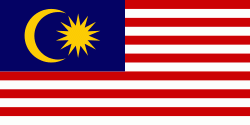Sandakan
 |
Before the founding of Sandakan, Sulu Archipelago was the source of dispute between Spain and the Sultanate of Sulu for economic dominance in the region. By 1864, Spain had blockaded the Sultanate possessions in the Sulu Archipelago. The Sultanate of Sulu awarded a German consular service ex-member a piece of land in the Sandakan Bay to seek protection from Germany. In 1878, the Sultanate sold north-eastern Borneo to an Austro-Hungarian consul who later left the territory to a British colonial merchant. The German presence over the area raised concern among the British. As a result, a protocol was signed between the British, German and the Spanish to recognise Spanish sovereignty over the Sulu Archipelago, in return for the Spanish not intervening in British affairs in northern Borneo.
Sandakan began to prosper when the British North Borneo Company (BNBC) started to build a new settlement in 1879, developing it into an active commercial and trading centre as well as making it the main administrative centre for North Borneo. The British also encouraged the migration of the Chinese from British Hong Kong to develop the economy of Sandakan. However, the prosperity halted when the Japanese occupied the area. As the war continued and Allied bombing started in 1944, the town was totally destroyed. Unable to fund the costs of the reconstruction, the administrative powers of North Borneo were handed over to the Crown Colony government. Subsequently, the administrative capital of North Borneo was moved to Jesselton. As part of the 1948–1955 Colonial Office Reconstruction and Development Plan, the crown colony government began to develop the fishing industry in Sandakan.
Sandakan is one of the main ports for oil, tobacco, coffee, sago, and timber exports. Other economic activities include fishing, ship building, eco-tourism, and manufacturing. Among the tourist attractions in Sandakan are Sandakan Heritage Museum, Sandakan Cultural Festival, Sandakan War Memorial, Sepilok Orang Utan Sanctuary, Turtle Islands National Park, and Gomantong Caves.
A first European settlement was built by a Scottish arms smuggler from Glasgow named William Clark Cowie who named the settlement "Sandakan", (which in the Suluk language means "The place that was pawned"). It was soon renamed Kampong German (Kampung Jerman), due to the presence of several German bases there. When another new settlement was built shortly after the previous Cowie settlement had been destroyed by a fire, it was called as Elopura, meaning "beautiful town". The name was given by the British North Borneo Company but the locals persisted to use the old name and later it was changed back to Sandakan. Besides Elopura, it was also nicknamed Little Hong Kong due to a strong presence of ethnic Chinese migration from Hong Kong (mainly Cantonese and Hakka). It was Pryer who gave the settlement the name Elopura meaning "beautiful town". Several years later the settlement was again renamed Sandakan. The name Elopura, however, is still used for some local government functions of the Sabah State Legislative Assembly, including elections. The town is usually referred as "Sandakan" nowadays instead of "Elopura" or "Little Hong Kong". However, efforts have been made to develop Sandakan so that the town is fitting to have the name of "Little Hong Kong" again.
Map - Sandakan
Map
Country - Malaysia
 |
 |
| Flag of Malaysia | |
Malaysia has its origins in the Malay kingdoms, which, from the 18th century on, became subject to the British Empire, along with the British Straits Settlements protectorate. Peninsular Malaysia was unified as the Malayan Union in 1946. Malaya was restructured as the Federation of Malaya in 1948 and achieved independence on 31 August 1957. The independent Malaya united with the then British crown colonies of North Borneo, Sarawak, and Singapore on 16 September 1963 to become Malaysia. In August 1965, Singapore was expelled from the federation and became a separate independent country.
Currency / Language
| ISO | Currency | Symbol | Significant figures |
|---|---|---|---|
| MYR | Malaysian ringgit | RM | 2 |
| ISO | Language |
|---|---|
| ZH | Chinese language |
| EN | English language |
| MS | Malay language |
| ML | Malayalam language |
| PA | Panjabi language |
| TA | Tamil language |
| TE | Telugu language |
| TH | Thai language |















